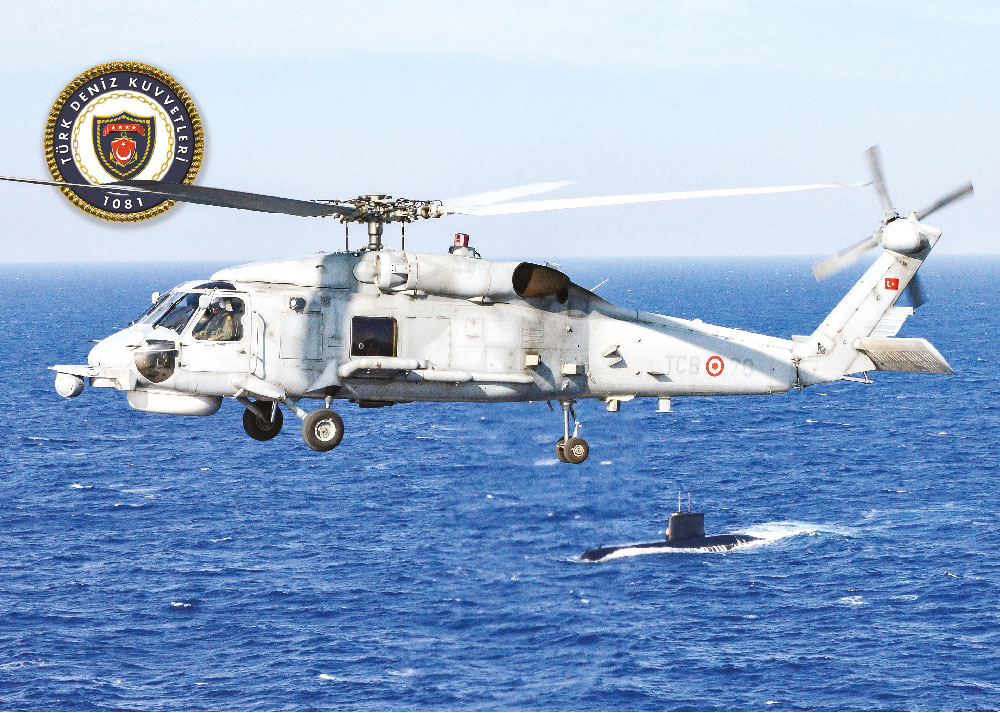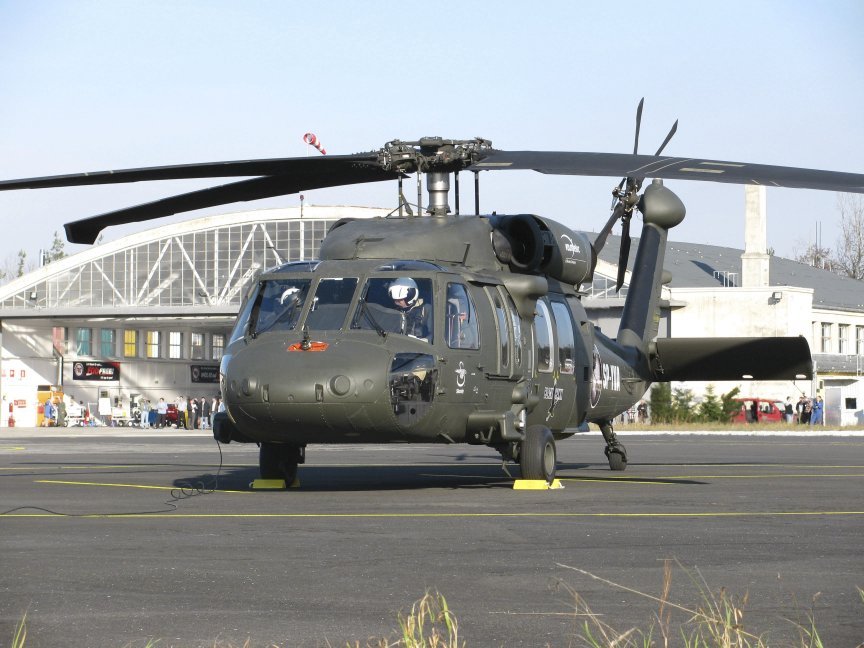A Consider the Sikorsky S 70's Role in Army and Civil Aviation
A Consider the Sikorsky S 70's Role in Army and Civil Aviation
Blog Article
High-Performance Multi-Role Rotorcraft Featuring Advanced Cockpit Technologies and Integrated Sensor Systems
The realm of rotorcraft modern technology has seen notable advancements in recent times, especially in the realm of high-performance multi-role rotorcraft outfitted with cutting-edge cabin technologies and effortlessly integrated sensing unit systems. These innovations have not only increased the operational capabilities of rotorcraft yet have additionally significantly influenced modern aviation operations on different fronts. From improved objective convenience to enhanced operational efficiency, the convergence of innovative cockpit technologies and incorporated sensing unit systems has actually ushered in a brand-new era of possibilities for rotorcraft applications. In the following conversation, we will certainly explore the advancement of rotorcraft innovation, look into the world of innovative cockpit technologies, and check out the implications of incorporated sensor systems on the operational convenience and efficiency of modern rotorcraft.
Development of Rotorcraft Innovation
The advancement of rotorcraft innovation has actually been noted by significant advancements in the rules of aerodynamics, products, and propulsion systems, forming the capacities and performance of modern-day rotorcraft. Wind resistant enhancements have actually boosted the performance and ability to move of rotorcraft, enabling for raised speed, agility, and security during trip (sikorsky s 70). Technologies in products, such as the use of composite materials and progressed alloys, have resulted in lighter yet stronger rotorcraft structures, enhancing total performance and resilience. Additionally, innovations in propulsion systems, including extra powerful engines and innovative propulsion modern technologies, have actually made it possible for rotorcraft to accomplish higher elevations, faster speeds, and better payloads.
These innovations have not just transformed the abilities of rotorcraft however have actually additionally expanded their applications across different markets, including army, industrial, and emergency services. The continuous development of rotorcraft technology remains to drive development in the field, pressing the borders of what is feasible and shaping the future of vertical flight.
Advanced Cabin Innovations
Building upon the fundamental innovations in the rules of aerodynamics, materials, and propulsion systems, the realm of rotorcraft innovation now shifts emphasis in the direction of pioneering Advanced Cockpit Innovations. The integration of cutting-edge modern technologies within the cockpit setting plays a vital duty in improving the functional capabilities, safety and security, and performance of modern rotorcraft. sikorsky s 70. Advanced Cabin Innovations incorporate a large array of attributes created to give pilots with improved situational recognition, structured data monitoring, and user-friendly control interfaces
One of the crucial innovations in cockpit style is the application of glass cabins, which change conventional analog gauges with high-resolution displays. These digital systems supply personalized formats, real-time information combination, and boosted readability, making it possible for pilots to accessibility vital details at a glimpse. Furthermore, advanced avionics systems, such as fly-by-wire controls and boosted truth screens, are revolutionizing how pilots interact with the airplane, allowing for accurate control and enhanced decision-making abilities.


Including advanced cockpit advancements not only boosts pilot efficiency however also adds to overall mission performance and safety in complicated operational atmospheres. By leveraging cutting edge technologies within the cabin, rotorcraft manufacturers are setting brand-new requirements for functional quality and goal success.
Integrated Sensing Unit Solutions
With the development of rotorcraft technology, the integration of innovative Integrated Sensor Equipment has ended up being critical in improving operational performance and security. These Integrated Sensing unit Systems include a broad array of modern technologies that give crucial information for different features such as navigating, security, targeting, and environmental surveillance. By effortlessly incorporating sensors like radars, electronic cameras, lidar, and infrared systems into rotorcraft, drivers can profit from improved situational understanding, enhanced mission abilities, and minimized pilot work.
One trick benefit of Integrated Sensor Solutions is their capability to gather real-time information and provide actionable understandings to pilots and mission operators. Progressed radar systems can spot and track targets over long distances, enabling for very early threat detection and effective action preparation. Additionally, incorporating electro-optical and infrared cameras enables rotorcraft to conduct reconnaissance and security missions with accuracy and precision.
Basically, the combination of innovative sensor innovations right into rotorcraft not only boosts functional efficiency however additionally contributes considerably to general mission success and crew safety. As rotorcraft continue to advance, the function of Integrated Sensor Solution will unquestionably continue to be at the leading edge of innovation in the aerospace sector.
Operational Convenience and Performance
Enhancing operational versatility and effectiveness in rotorcraft is an all-natural progression from the combination of advanced Integrated Sensing unit Solutions. By leveraging the understandings and information offered by these advanced sensor systems, rotorcraft can optimize their performance across numerous objectives and atmospheres.
Functional adaptability incorporates the ability of rotorcraft to adapt to various roles and circumstances efficiently. With innovative cockpit innovations and incorporated sensing unit systems, rotorcraft can perfectly transition in between tasks such as search and rescue, clinical evacuation, monitoring, and extra. This adaptability improves the rotorcraft's capability to fulfill diverse operational demands without calling for considerable reconfiguration.
Efficiency in rotorcraft procedures is crucial for making the most of objective efficiency and source utilization. Integrated sensor systems play a critical function in boosting operational performance by giving real-time data on weather condition problems, terrain mapping, target tracking, and a lot more. This information makes it visit this site possible for pilots to make educated decisions useful content swiftly, optimize flight paths, conserve fuel, and boost general goal productivity.
Effect On Modern Aviation Workflow

In addition, the assimilation of sophisticated sensors facilitates improved objective planning and execution, allowing rotorcraft to carry out a vast range of jobs with improved precision. From search and rescue procedures to aerial firefighting and police objectives, the abilities of contemporary rotorcraft geared up with innovative cockpit modern technologies and integrated sensing unit systems are exceptional.
Furthermore, the impact of these developments prolongs past functional effectiveness to cost-effectiveness and sustainability. By optimizing trip courses, fuel intake, and upkeep routines, high-performance rotorcraft furnished with advanced cockpit modern technologies and sensors add to decreasing operational expenses and environmental effect, making them vital properties in modern aeronautics operations.
Conclusion
To conclude, the high-performance multi-role rotorcraft with innovative cockpit technologies and integrated sensor systems stands for a considerable advancement in air travel modern technology. These innovations enhance operational versatility and effectiveness, ultimately impacting contemporary air travel procedures in a favorable way. The integration of these sophisticated innovations permits boosted abilities and performance in different mission scenarios, showcasing the continued advancement of rotorcraft technology in the air travel market.
The realm of rotorcraft innovation has seen remarkable innovations in current times, particularly in the realm of high-performance multi-role rotorcraft equipped with cutting-edge cockpit innovations and effortlessly integrated sensing unit systems. From enhanced objective adaptability to boosted functional effectiveness, the merging of innovative cockpit technologies and integrated sensing unit systems has ushered in a brand-new era of opportunities for rotorcraft applications. In the following discussion, we will check out click to investigate the development of rotorcraft technology, delve right into the realm of sophisticated cockpit developments, and check out the ramifications of integrated sensor systems on the operational flexibility and efficiency of contemporary rotorcraft.

Report this page